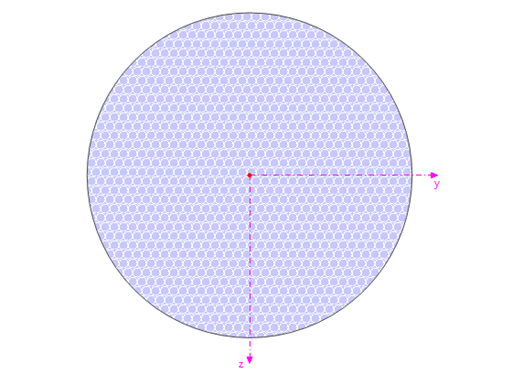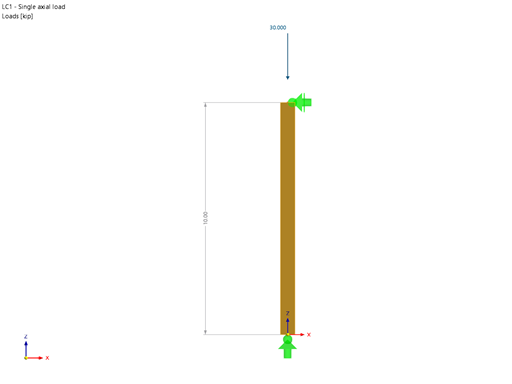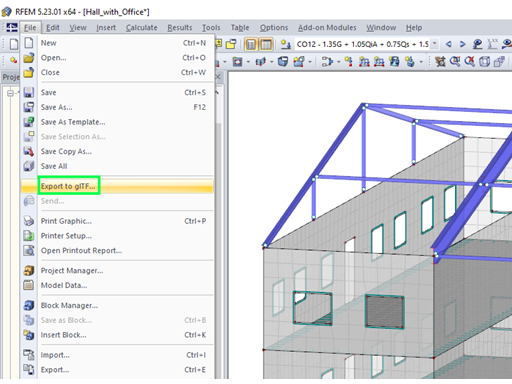We all know how critical our climate is. Global warming should not be driven any further. The goal of the Paris Agreement is not to exceed the warming about 1.5 to 2 degrees Celsius by the year 2100.
Germany must be climate neutral by 2050 in order to meet the target for 2100. For this, we need far-reaching measures and changes everywhere.
How climate-damaging is the construction industry?
The numbers are shocking. It uses about 40 percent of the energy. This includes the construction of buildings, but also the use of them. The construction industry takes credit for a half of the resources and about 60 percent of the waste.
In Germany, about 100,000 detached houses and 10,000 non-residential buildings are completed each year. However, the proportion of renovations is only about 1 to 1.5 percent. To meet the climate goals, the construction sector would have to reduce emissions to zero over the next 20 years.
What are the approaches for this? Which measures should be taken?
An exciting approach is Cradle to Cradle. The goal is to create an intact cycle, based on the example of nature. Products and materials should be used over and over again to avoid waste.
However, humans only have a linear approach. It is Take - Make - Dispose. This could also be called Cradle to Grave, that is, from the origin to the grave. If a product is broken, we throw it in the trash. In some cases, poisonous substances even occur, for example, in the case of electrical appliances.
The question is, why do we not also have the circular economy, as nature shows us. The waste we produce is a valuable raw material in the wrong place. The problem is that we only start to think when the waste is already there. This is also bad for the life-cycle assessment.
In this context, the term Cradle to Cradle comes into play. The principle is to achieve a positive ecological footprint. There are two cycles that interlock. On the one hand, there is the biological cycle. This includes everything that ends up in the environment. In the case of a biological T-shirt, for example, the worn textiles are reintroduced into the cycle.
On the other hand, there is the technical cycle. An item is checked and then reused as a new resource. There are consumable materials that do not enter the biosphere directly and do not wear out directly. The idea of C2C is to combine these two cycles. After the materials have been used in a product, they should be useful in another material.
This principle should also be applied in the construction industry. This means building low-tech, but planning high-tech. Engineers should use natural resources without a long transport routes as much as possible, and try to use renewable energies.
C2C is not just a technical solution, but a way of life. Buildings should be built for people, not just for energy balance. These two points are merged as an integral planning. In addition to ecology, also the energy, economics, socio-cultural aspects, comfort, functionality, design, technology, and the process itself are taken into account.
So, in theory, the opportunities are here. However, there is often a lack of investment.
Which pilot projects are there already?
In the case of the C2C principle, construction materials with low emissions should be used that also contain no pollutants. Healthier products improve the quality of life and workers will get sick less often. This increases the productivity.
It also includes the old building material clay.
Holz100 also has the C2C approach. The slabs are layered crosswise and dowels are used as mechanical connections. The result is a healthy building material, because glue and other protective materials are completely omitted.
The key thing is moon wood, because the wood fibers are denser and thus prevent pests from entering it. There are no toxic wood preservatives. This results in higher investment costs, because the planning effort is much higher. However, the advantages of timber allows for saving costs in the service life, which can compensate the initial higher investment sum.
An example is hte Woodcube in Hamburg, Germany. It is an apartment house built as a solid timber structure. During the construction, no harmful substances were used. Thus, the building is CO₂-neutral. In such projects, fire protection is often questioned. However, due to the solid construction, no further measures are required.
Another example is "The Cradle" in the Düsseldorf district MedienHafen: an office building made almost exclusively of timber. The project already takes into account the fact that the timber will be used for something else at some point. Nevertheless, it was not possible to build the structure without concrete. However, the composition was selected in such a way that the material can be sorted and reused then. The interior design is based on non-polluting and recyclable materials, because it provides a healthy environment for employees.
As already mentioned, renovations are much better than the complete demolishion of a building. Framing would help to build and remove the walls. Thus, buildings could be subsequently used for different purposes. This possible change in a floor plan can also be considered in the original project.
The most sustainable housing situation should also be considered. Generally speaking, the best would be less living space for each resident. This would also reduce the serious area sealing. The most efficient would be a shared accommodation with private rooms, but shared living rooms and baths.
These examples show that C2C does not only depend on the sustainability of the materials, but also requires a complete rethink. The goal is to consider entire districts, which all comply with the C2C principle. It is even easier to think big than to consider each structure individually.
One of the districts that has been certified as sustainable is the Cloche d'Or district in Luxembourg. Working, living, leisure, education, mobility, and shopping are brought into harmony in terms of sustainability. There are numerous green spaces with a rich biodiversity.
The Netherlands got the first upturn in terms of C2C: Such a building was built in the city of Venlo and serves as a model for the entire world. It is a green citizens' service center of the city hall. The north side of the building is a façade with plants. It can convert CO₂, filter particulate matter, and absorb nitrogen oxides and ozone. Inside the building, there are also many plants, providing additional oxygen and moisture. The Venlo experts say that this makes the building a good structure, not just a bad one. The facades are made of aluminum. It is infinitely reusable without any loss of quality. A so-called sun chimney was designed, which is made of glass and heats the roof. Natural tension arises in the building. Due to the thermal effects, the air is exchanged every two hours.
The concrete core activation controls the temperature in the building. This saves an expensive and energy-consuming heating or air conditioning system. There are solar cells installed on the outer wall, which have the function of solar protection and the source of energy. Compared to the previous location of the city hall, the energy consumption has been reduced by a third. The furniture used is also mainly certified, for example, in the case of chairs or the carpet. Most products can be reused after the building's lifetime. The special ground plan allows the materials to be dismantled more quickly.
Will Cradle to Cradle become the standard soon?
Cradle to Cradle is a new approach to sustainability in the construction industry. Nevertheless, we are still at the beginning. This new way of thinking has yet to be widely accepted.
There is not just one solution. For example, if you look at various locations, there are many different regional materials. It is necessary to accept that the initial costs are higher. In the end, this pays off over the entire life cycle.
100 percent Cradle to Cradle does not work yet. There is still no real alternative for a foundation, for example. Nevertheless, recycled concrete is very complex and expensive to manufacture. This is also referred to as downcycling, because high-quality products are only used as subsoil for road structures.
Parenthesis: Implementation of Sustainability in RFEM
RFEM 6 includes the two-part add-on Optimization & Costs / CO₂ Emission Estimation. The AI of the particle swarm optimization is used to search for suitable parameters that meet the usual optimization criteria. It estimates the model costs or CO2 emissions by specifying unit costs or emissions per material definition for the structural model. Discover more under the following Link.
As you can see, the innovations are here. The only thing to do is to start. BIM will also help to drive this principle forward.
.jpg?mw=760&hash=ac7b222ba7e8e8424594bd107f56e87c88a412f0)








.png?mw=350&hash=c6c25b135ffd26af9cd48d77813d2ba5853f936c)





















.png?mw=512&hash=ea9bf0ab53a4fb0da5c4ed81d32d53360ab2820c)







.jpg?mw=350&hash=8f312d6c75a747d88bf9d0f5b1038595900b96c1)
